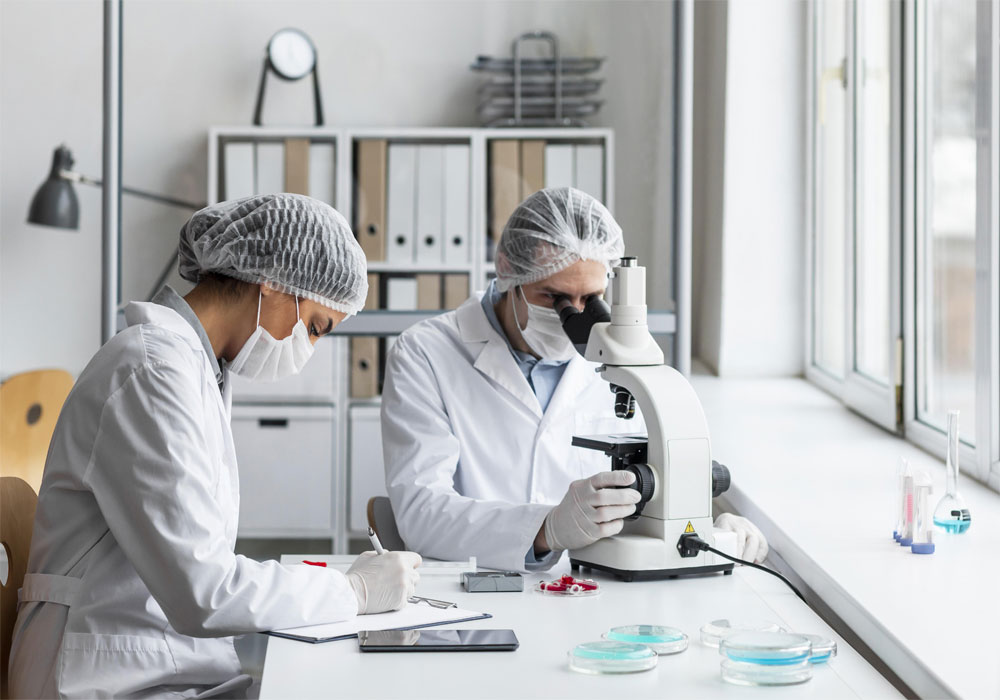Unveiling the Path to a Successful Career: The DMLT Course Explained
Welcome to our comprehensive guide on the DMLT course! If you’re considering a career in medical laboratory technology, the Diploma in Medical Laboratory Technology (DMLT) course could be your gateway to a rewarding profession in the healthcare industry. In this blog post, we’ll delve into the details of the DMLT course, covering everything from eligibility criteria and duration to career prospects and opportunities after completion.
Understanding the DMLT Course:
The Diploma in Medical Laboratory Technology (DMLT) is a two-year study that is divided into four semesters. Pathology, biochemistry, microbiology, pharmacology, and immunology are among the topics covered in the DMLT course. The DMLT course also includes internships and projects that are tailored to the needs of the industry.
The DMLT course is a diploma program that trains students in various aspects of medical laboratory technology, including laboratory procedures, equipment operation, sample collection, testing, and analysis. It equips students with the knowledge and skills needed to work in clinical laboratories, diagnostic centers, hospitals, and research institutions.
Key Components of the DMLT Course:
- Curriculum: The DMLT course curriculum covers a wide range of subjects, including biochemistry, microbiology, hematology, pathology, immunology, and medical ethics.
- Practical Training: Practical training is an integral part of the DMLT course, allowing students to gain hands-on experience in laboratory techniques, equipment handling, and sample analysis under the guidance of experienced professionals.
- Internship: Many DMLT programs include a mandatory internship or clinical rotation, where students work in real-world laboratory settings, applying their knowledge and skills in a supervised environment.
Key Details of the DMLT Course:
- Full Form: DMLT stands for Diploma in Medical Laboratory Technology.
- Duration: The duration of the DMLT course typically ranges from 1 to 2 years, depending on the institution and curriculum.
- Qualification: To pursue the DMLT course, candidates must have completed their 10th or 12th standard examinations from a recognized board or institution. Some institutes may have specific eligibility criteria, such as minimum aggregate marks or science background.
- Curriculum: The DMLT course curriculum includes both theoretical and practical components, covering topics such as laboratory techniques, diagnostic procedures, medical terminology, and quality assurance.
- Eligibility: Eligibility for the DMLT course varies from one institution to another but generally requires candidates to have a minimum qualification of 10th or 12th standard with science subjects.
Career Prospects after DMLT Course:
Graduates of the DMLT course can pursue various career paths in the field of medical laboratory technology, including:
- Medical Laboratory Technicians
- Laboratory Assistants
- Phlebotomists
- Pathology Lab Technicians
- Research Assistants
- Quality Control Technicians
After DMLT Course: What Can I Do?
After completing the DMLT course, graduates can further their education by pursuing advanced degrees or certifications in specialized areas of laboratory technology, such as:
- Bachelor’s Degree in Medical Laboratory Technology (BMLT)
- Master’s Degree in Medical Laboratory Science (MSc MLT)
- Specialized certifications in areas like cytotechnology, histotechnology, or molecular diagnostics.
Conclusion:
The DMLT course opens doors to a wide range of opportunities in the field of medical laboratory technology, providing students with the knowledge, skills, and qualifications needed to succeed in clinical laboratories, diagnostic centers, and healthcare settings. Whether you’re just starting your career journey or looking to advance your skills, the DMLT course can be your stepping stone to a rewarding and fulfilling career in the healthcare industry. Explore the possibilities, enroll in a DMLT program, and embark on your path to success in medical laboratory technology.
